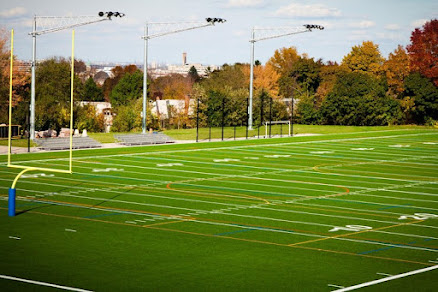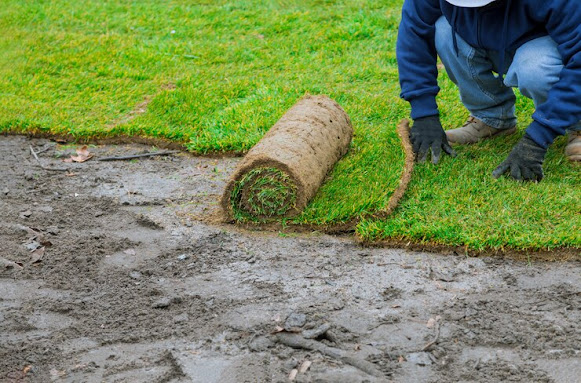Does Artificial Grass Overheat?
Artificial grass offers many benefits—low maintenance, year-round greenery, and water conservation—but one concern that often arises is heat. A common question we hear from homeowners, schools, and athletic facility managers is: Does artificial grass overheat? The honest answer is yes, artificial grass can get significantly hotter than natural grass, especially under direct sunlight. However, there are effective ways to reduce and manage this issue.
At Lakota Design Group, we specialize in custom turf installation in Bay Area environments, where sunshine and warmer temperatures are part of everyday life. We believe in providing accurate information so you can make informed decisions about your landscape or athletic field. This guide explains why synthetic turf heats up, how it compares to other surfaces, and what you can do to keep it cool—especially when managing the cost of artificial grass football field projects.
Why Does Artificial Grass Get Hot?
Artificial turf is made from synthetic materials like polyethylene, polypropylene, or nylon. These materials absorb and retain heat from the sun more readily than natural grass, which cools through transpiration (the process of releasing water vapor). Because artificial grass lacks this natural cooling mechanism, surface temperatures can rise quickly on warm or sunny days.
In fact, artificial turf can get 35°F to 60°F hotter than natural grass under identical conditions. For example, when the outdoor temperature is 90°F, the surface of artificial turf can reach 130°F or more—hot enough to feel uncomfortable on bare skin or paws.
Is Overheating a Problem for All Turf Installations?
Heat buildup is most noticeable in direct sunlight and non-shaded open areas. This is a common concern for residential backyards, playgrounds, or large athletic fields. However, several factors influence how hot turf gets, including:
Color of the turf fibers: Darker greens absorb more heat than lighter shades
Type of infill used: Rubber infill tends to retain more heat than sand or organic options
Wind and air circulation: Shaded or breezy areas tend to stay cooler
Material composition: Some turf systems are engineered with heat-resistant technologies
Understanding these variables is crucial when designing turf systems for high-traffic applications like football fields or playgrounds. At Lakota Design Group, we factor in climate, exposure, and usage needs for every Artificial Turf in Bay Area installation to minimize heat retention.
How Does Artificial Turf Compare to Other Surfaces?
Artificial grass does get hot, but it's still cooler than many other common outdoor surfaces. Here's how it compares on a sunny day:
Natural Grass: ~85°F
Artificial Turf: ~120°F – 160°F
Asphalt or Blacktop: ~130°F – 170°F
Concrete: ~110°F – 140°F
Sand: ~110°F – 130°F
Rubber Play Surfaces: ~140°F+
So while artificial turf does heat up, it's often less hot than asphalt or rubber, which are commonly used in playgrounds and sports courts. Plus, modern turf products and design strategies can help reduce overheating significantly.
How to Reduce Heat on Artificial Turf
Concerned about overheating? The good news is that several strategies can significantly reduce turf temperatures and improve comfort:
1. Choose Heat-Resistant Turf Products
Some premium turf lines are engineered with infrared-reflective (IR) technology or cooling fibers that reduce heat absorption by reflecting sunlight. These products can stay up to 15% cooler than standard turf.
2. Use Cooling Infill
The type of infill used plays a major role in turf temperature. While rubber infill retains heat, sand, coated sand, or organic infill materials (like cork or coconut husk) stay cooler and allow better airflow. These are ideal options for turf installation in Bay Area schools and sports fields.
3. Add Shade Structures
Installing shade sails, pergolas, trees, or awnings over portions of turf can help lower temperatures significantly, making the area more comfortable for pets and children.
4. Mist or Rinse the Surface
A quick rinse with water before playtime can drop surface temperature by 30°F or more. This is especially helpful on extremely hot days for playgrounds or sports fields.
5. Install Turf in Strategic Locations
Avoid installing turf next to reflective surfaces like windows, white walls, or metal fences, which can amplify heat. During planning, we analyze your site’s exposure to ensure optimal placement.
Heat and Sports: Is It Safe to Play on Hot Turf?
In high-performance applications like football, turf temperature becomes more than a comfort issue—it’s about player safety and athletic performance. Excessively hot surfaces can contribute to dehydration, overheating, and slower reaction times during practice or games.
That’s why we advise sports facility managers to consider the cost of artificial grass football field installations alongside the need for cooling strategies. Choosing the right turf system with proper drainage, shock pads, and infill can make a major difference in safety and usability during peak heat hours.
At Lakota Design Group, we engineer turf systems that include optional cooling infills and heat-reflective technologies to ensure athletes stay safer, even during California's warmer months.
Artificial Turf in Bay Area: Realistic Heat Expectations
In the Bay Area, the climate is generally mild compared to inland regions. However, heat spikes during summer are common—especially in cities like San Jose, Pleasanton, or Concord. Coastal areas like San Francisco or Half Moon Bay experience less heat, but reflective sunlight can still warm turf quickly.
That’s why regional experience matters. Our team at Lakota Design Group has worked on a variety of Artificial Turf in Bay Area installations, from school sports fields to commercial landscapes. We apply localized knowledge to optimize each design for comfort, function, and longevity—even in the heat.
Does Turf Overheating Affect Durability?
Heat may cause temporary discomfort, but it doesn’t usually affect the turf’s durability or performance if the system is built properly. High-quality turf is UV-stabilized to prevent fading or cracking, and professional installation ensures proper drainage and base support.
However, excessive, prolonged heat combined with poor maintenance could reduce turf lifespan, particularly in high-wear areas. That’s why regular grooming, infill replenishment, and seasonal inspections are important—especially for athletic fields with heavy use.
You can read about: How Much Will Artificial Grass Cost?
Final Thoughts
So, does artificial grass overheat? Yes, it can, particularly under direct sunlight on hot days. But thanks to advanced turf technologies, cooling infills, and smart installation techniques, heat can be managed effectively—especially when you work with an experienced team.
At Lakota Design Group, we offer complete turf installation in Bay Area for homes, businesses, and sports facilities. We understand the local climate and use the latest materials to keep your turf cooler, safer, and longer-lasting.
Whether you're planning a backyard remodel or evaluating the cost of artificial grass football field, we’re here to guide you through every step. For professional consultation, tailored design, or to learn more about our heat-resistant turf options, contact us today and let’s build a landscape that looks great and feels comfortable—even in the sun.


Comments
Post a Comment